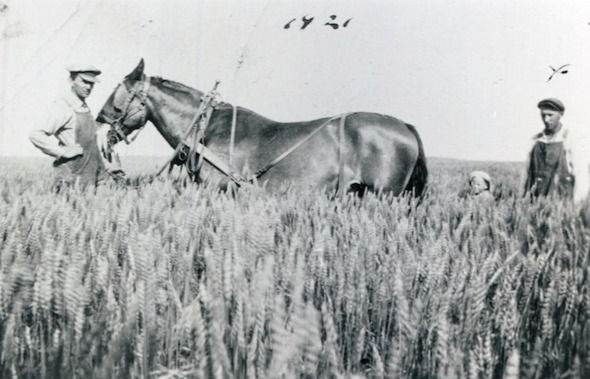Homesteading: The Loverna Years
- Charlie B

- Apr 5, 2020
- 2 min read
Updated: Apr 7, 2020
The details of early days at Loverna, Saskatchewan are a bit sketchy for me. However there are several detailed descriptions by Alberta historical societies that have a lot of information and pictures. Once a vibrant community of 500 people shortly after its formation around 1914 it became a railway hub. It gradually started to fade in the Great Depression and with several devastating fires it was derelict in the latter part of the 20th century.

Some of my family's faded black and white pictures survived. They look bleak and remind me of Steinbeck's description of the American sharecroppers in his book “ The Grapes of Wrath”. The village at its prime had stores, restaurants and doctors. The bald prairie surrounded it and there were measured-off farming sections for the homesteaders.

I visited Loverna in the 1990s in my RV and found a deteriorated cluster of run down buildings that seem to be for the storage of farm machinery although there was one that appeared to be a service and repair centre for the stored equipment. The “main“street contained a small stone monument almost covered with tumbling weed clusters. I pulled them back to find a brass plaque with a dozen names of local men killed in the first world and the inscription “Their Memory Will Live Forever” which I found a bit ironic considering the setting.

Alex and Ola were married on December 27th 1917. Very soon after they moved to Loverna. It must have been a muted event considering that the Mulligan family had just received notification that Vincent had been killed in France. Their first child Donald Vincent was born in the back of the Loverna store in late 1918 with the store owners wife as midwife or so the story went. We can only marvel at what must having greeted this young bride. A quiet cloistered life in town with her family must have been a far distant dream. The harsh reality of a sod house the first year and the daunting challenges of establishing a productive dry land farm must have been overwhelming. She had to learn to cook but thanks to Alex and a neighbour lady who taught her how to make bread she became a very good cook. Alex was able to build a small house - really a shack - fairly quickly. It seems that he planted some crops which failed in the dry land conditions

Sometime in the early in the 1920s a Federal initiative established the Canada Land project and established an irrigation project across the Bow River near the town of Vauxhall in the SE part of Alberta. They abandoned Loverna and established a successful farm operation there where I grew up. The irrigation and climate allowed my dad to have two hay harvests a year. The family occupied this expanding farm until we moved to Victoria in 1944.




Hello Dr. Brumwell. In reading a short news article about you the Brumwell name struck a chord with me and my curious nature wondered which of my parents, Henry Gray, Claresholm or Ada Smyth (Gray), Loverna, had mentioned this neighbour name to me in passing throughout the years. In reading your blog on Loverna I decided that it must have been my mother whose parents, Alexander and Sadie Smyth had homesteaded near Loverna, on the Alberta side of the border. I believe that the Brumwell family were neighbours of theirs. My mother passed away in 2018 at the age of 91. She was the youngest child of four in the Smyth family. With a love for my mother and h…